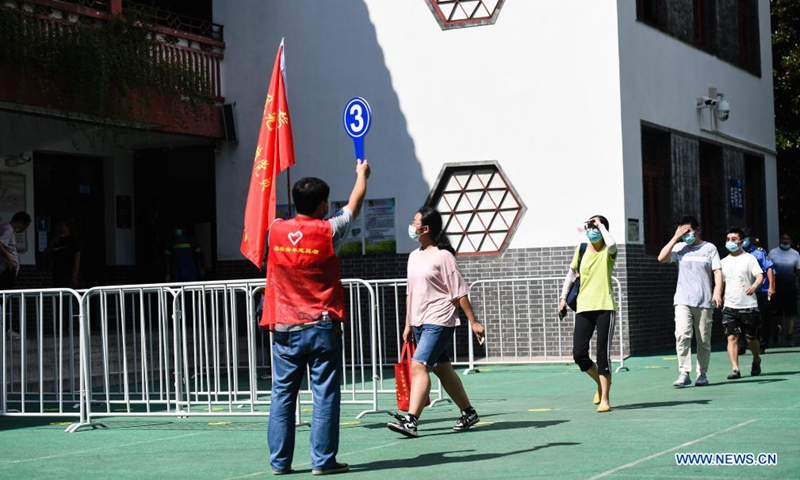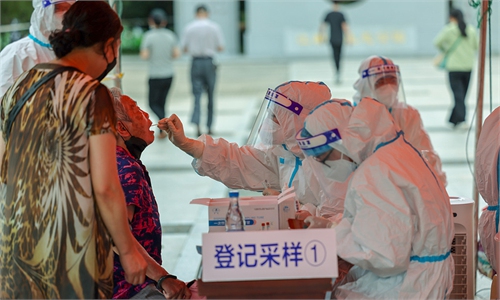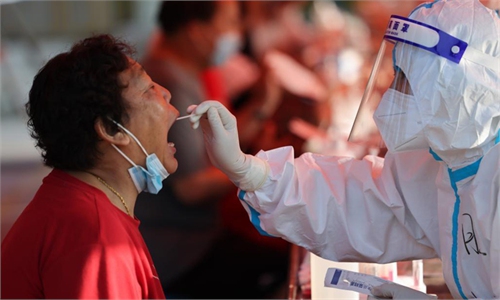Cities strengthen management at testing sites after 35 infections reported at Yangzhou’s testing sites

A volunteer guides people to take COVID-19 nucleic acid tests in Nanjing, east China's Jiangsu Province, Aug. 5, 2021. Nanjing launched a fifth round of nucleic acid testing in some areas of the city on Thursday. Photo:Xinhua
Cities across China started to strengthen their management in organizing people taking nucleic acid tests after 35 infections were reported at a testing site in Yangzhou, East China's Jiangsu Province, due to poor epidemic prevention and control management.
A testing site in Zhangjiajie, Central China's Hunan Province, is using circles drawn on the ground with an interval of one meter between them to organize queue lines. Each individual at the site is requested to stand inside a separate circle as they queue up for the test. A video of the testing site taken on Saturday being shared online shows that inside the circles, some residents stand, some squat down on the floor while some sit on plastic stools. But everyone is queuing up in an orderly manner.
Zhangjiajie reported six new local cases of COVID-19 on Monday, lifting the total number to 53 since July 29 amid the latest outbreak.
Cities have improved testing management after a COVID-19 testing site in Yangzhou caused large-scale cross-infections on July 29 due to poor management of personnel, which led to a chaotic gathering of people among whom one was a virus carrier.
Also, on August 1, Nanjing, capital city of Jiangsu Province, reported that a two-year-old boy became infected after contacting with a confirmed case while his family was waiting in line for a nucleic acid testing.
The nucleic acid testing sites have become "infection points," which not only causes cross infections, but also increases the pressure and cost of epidemic prevention and control, said health experts.
They noted many people have been actively cooperating with nucleic acid testing, but infections at testing sites are likely to make some people suspicious of the anti-epidemic measures.
The guidebook for the COVID-19 nucleic acid testing formulated in July 2020 requests the testing sites to set up independent waiting areas, ensure one-way flow of people, request people to queue in safety distance of more than one meter, and strictly control the density of people.
In February, the joint prevention and control mechanism document published by national authorities proposed that nucleic acid testing institutions should fully implement the appointment service, collect testing samples at different times and at different peaks, and minimize the people's waiting time on site.
Yang Zhanqiu, a virologist at Wuhan University, told the Global Times on Tuesday that infections at testing sites warned the relevant institutions to organize testing strictly in accordance with the national requirements. This requires that each nucleic acid testing point is equipped with enough service personnel, and make them responsible for maintaining order at the site, Yang noted.
Not only the departments of discipline at all levels should play a supervisory role, but also the masses should be encouraged to participate in the supervision over the management of the testing sites, he said.
As the Delta variant is more infectious, whether it is necessary to improve testing point setup is worth considering, Yang said.



